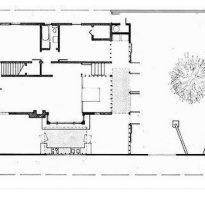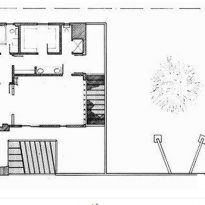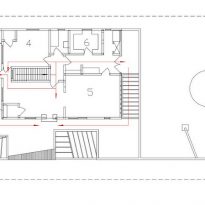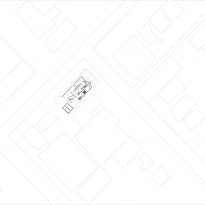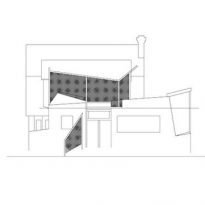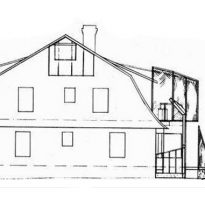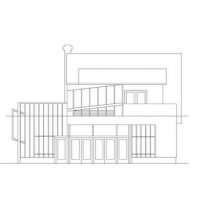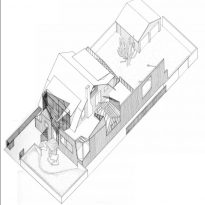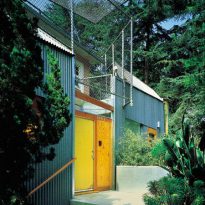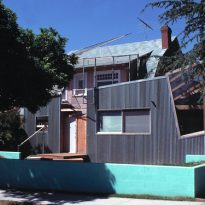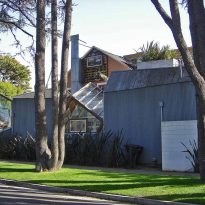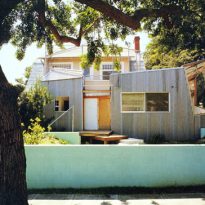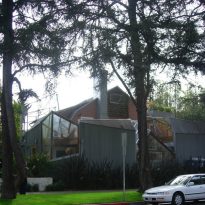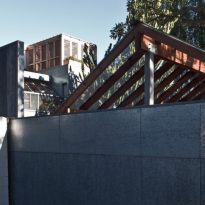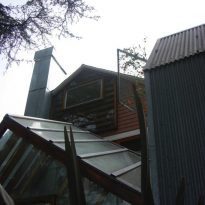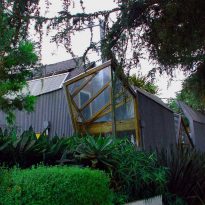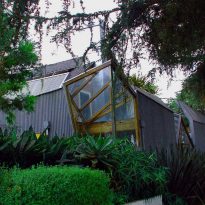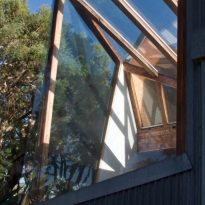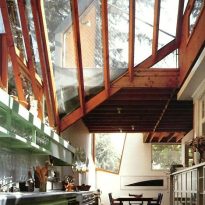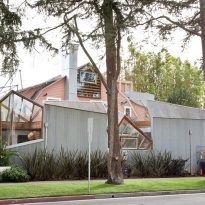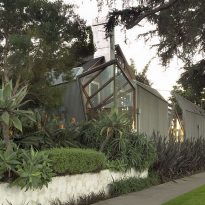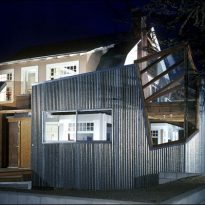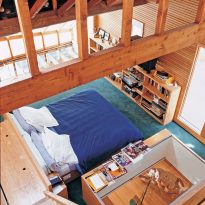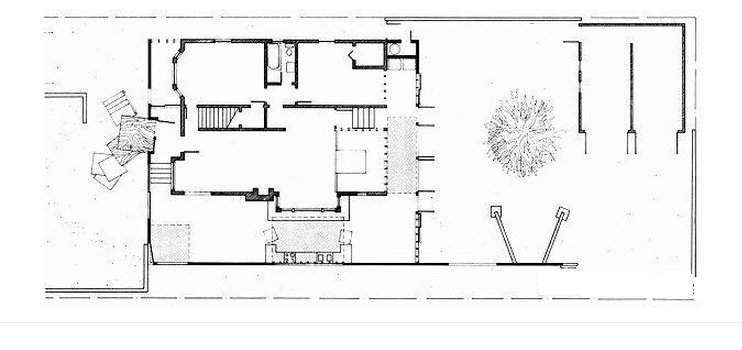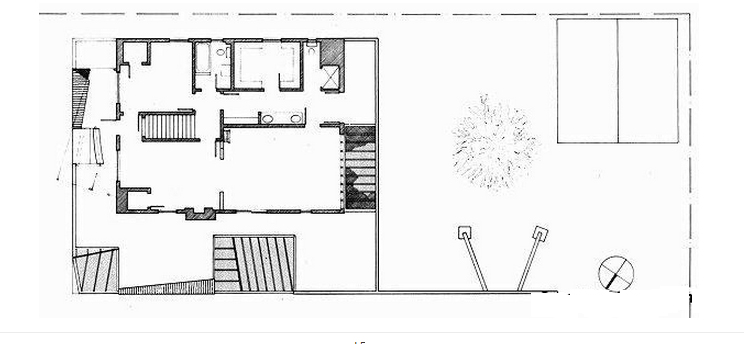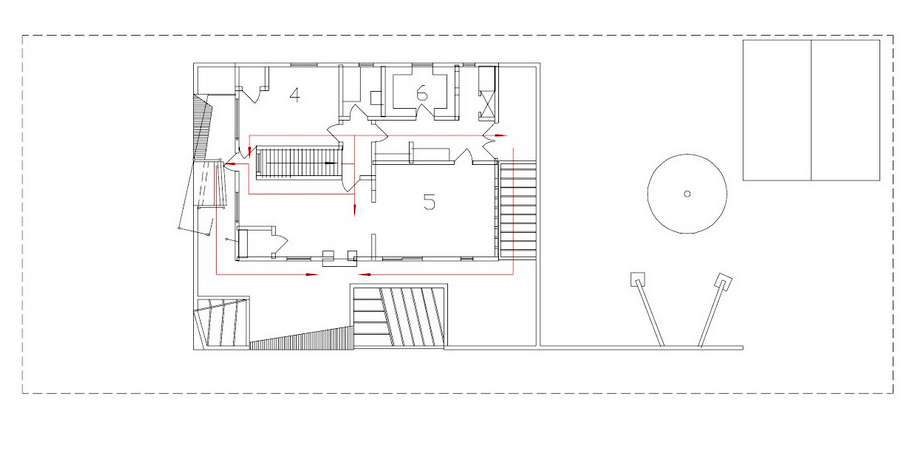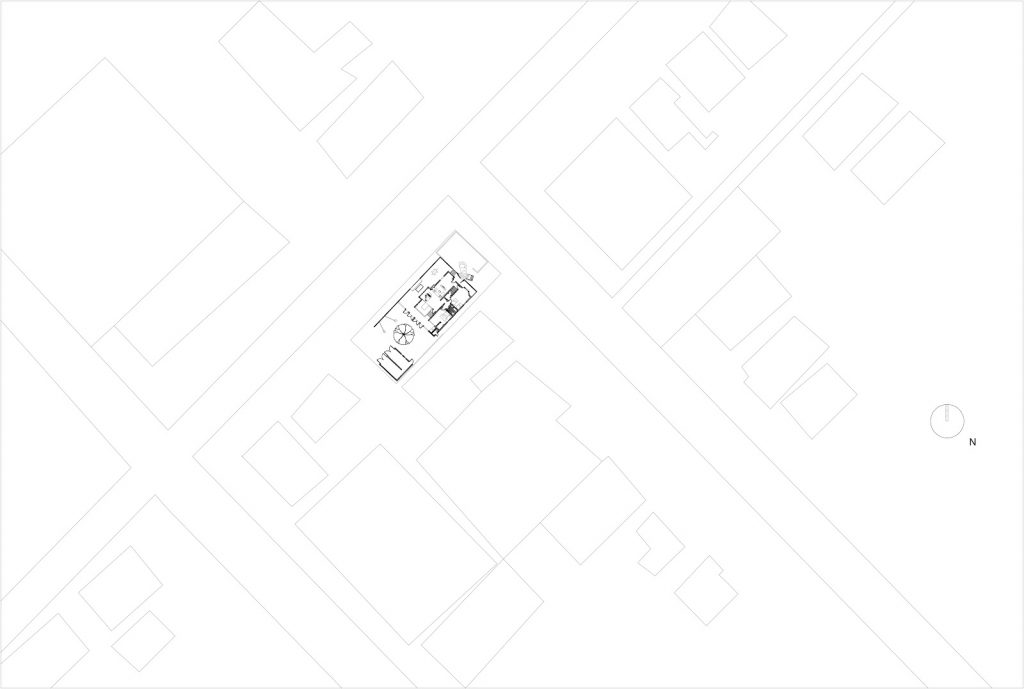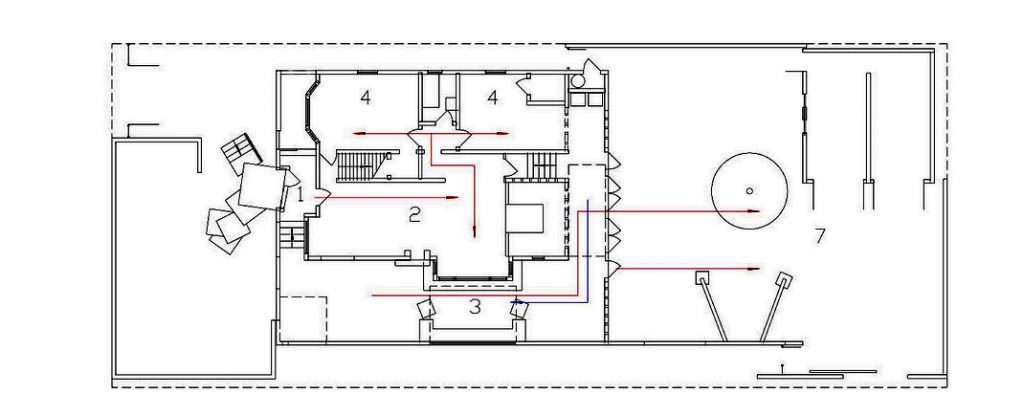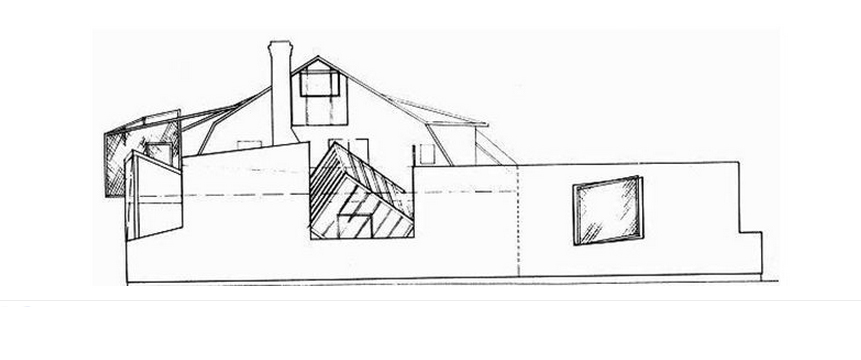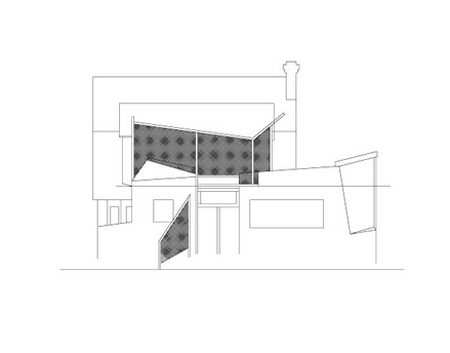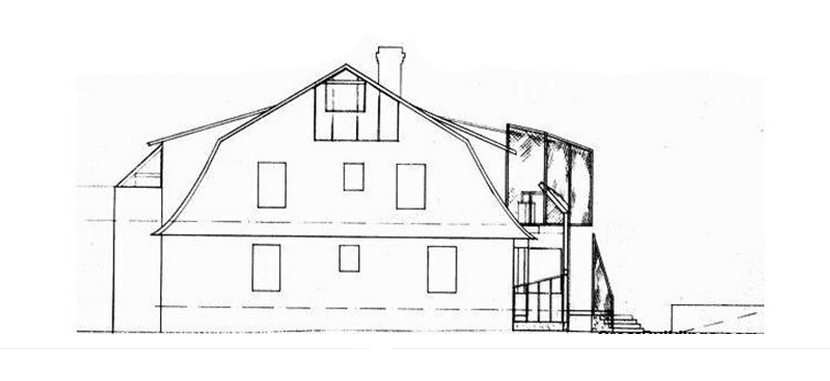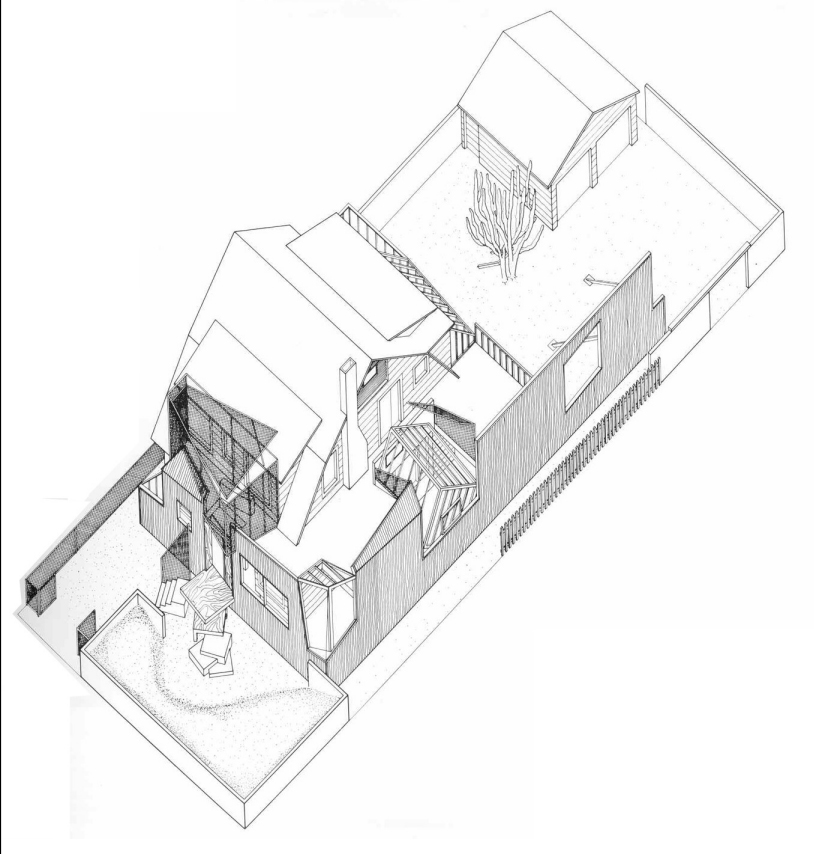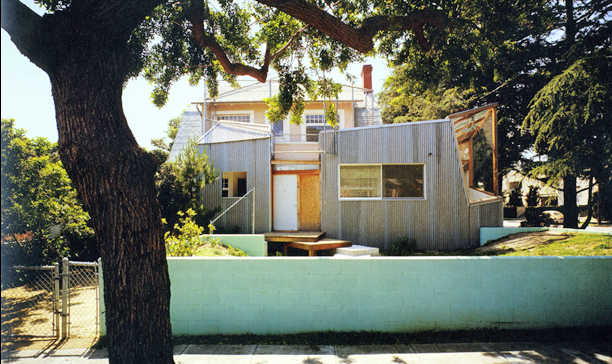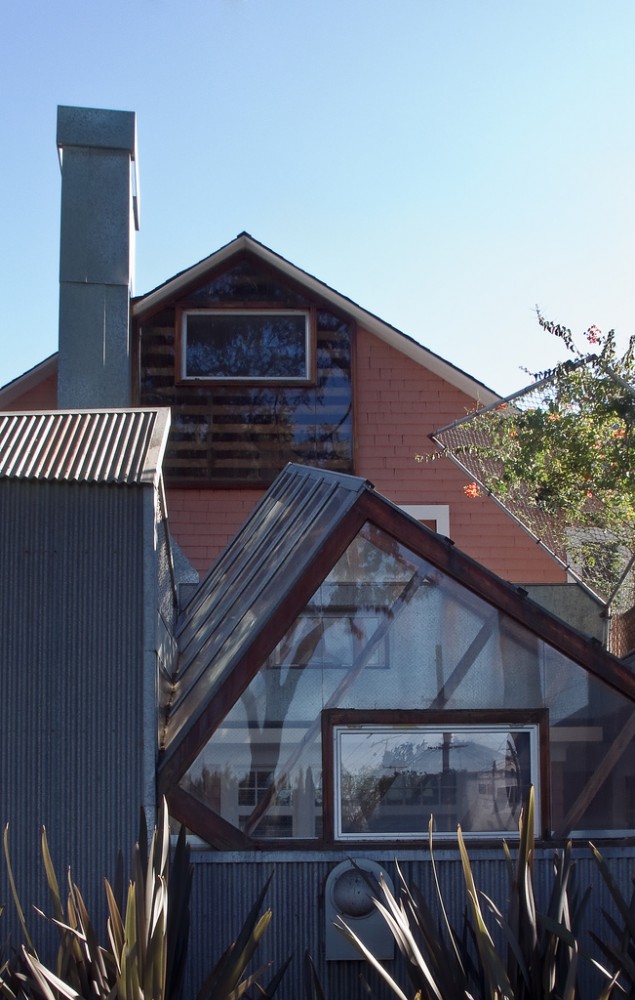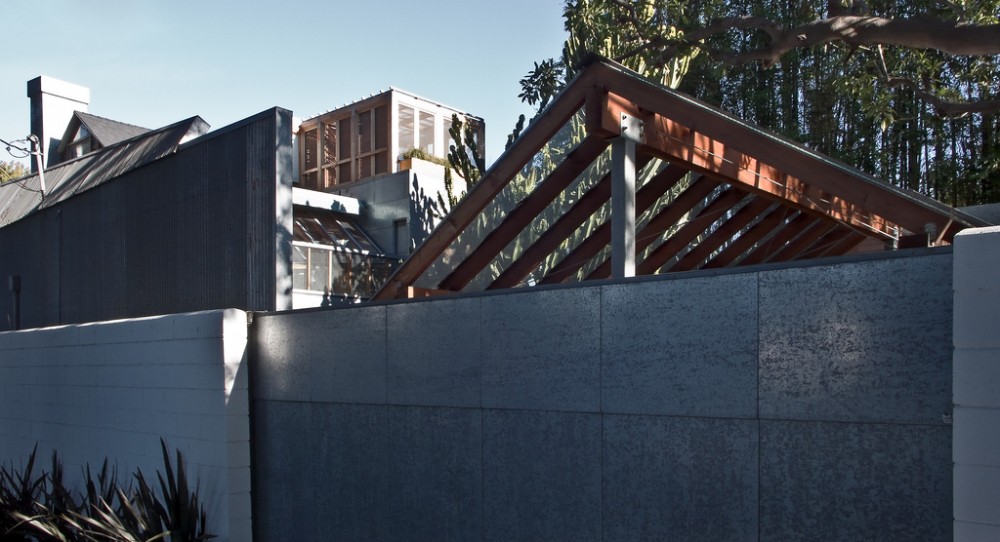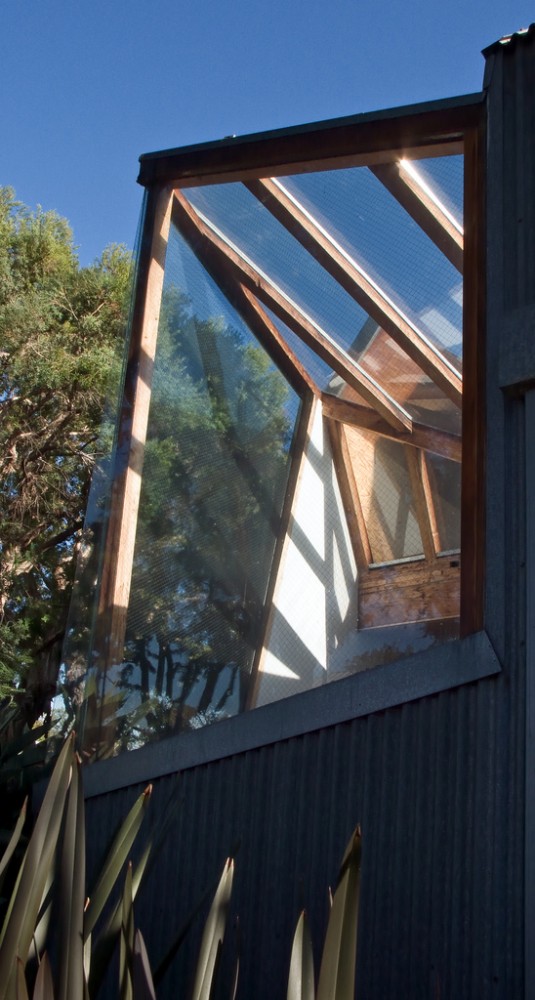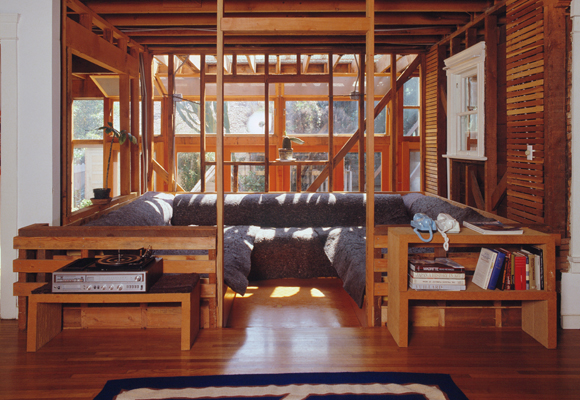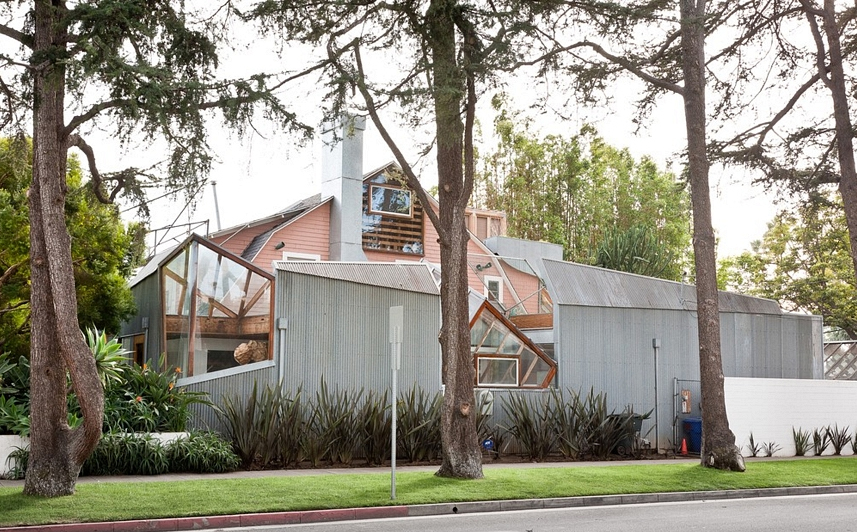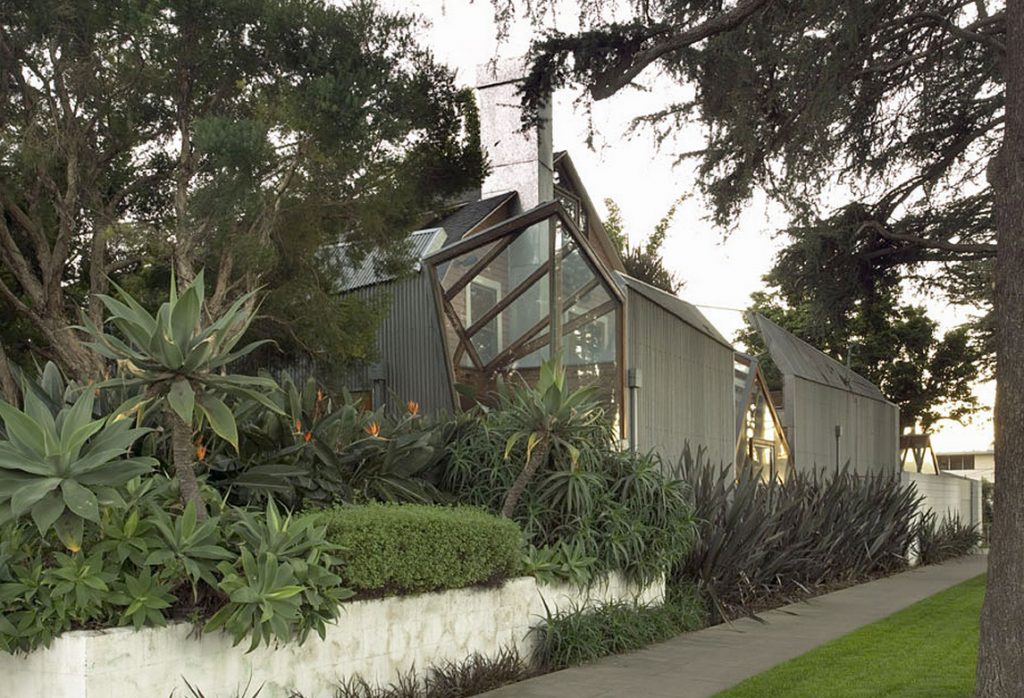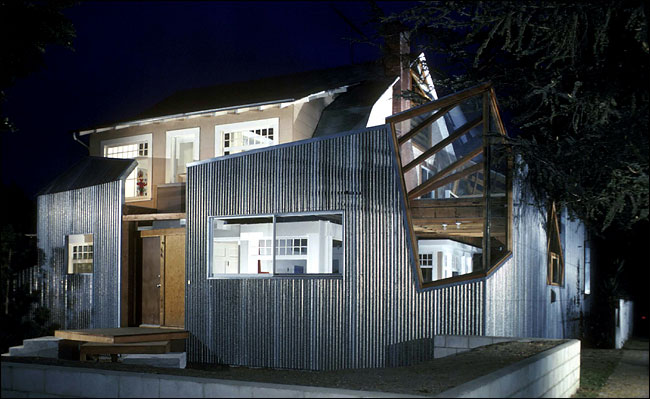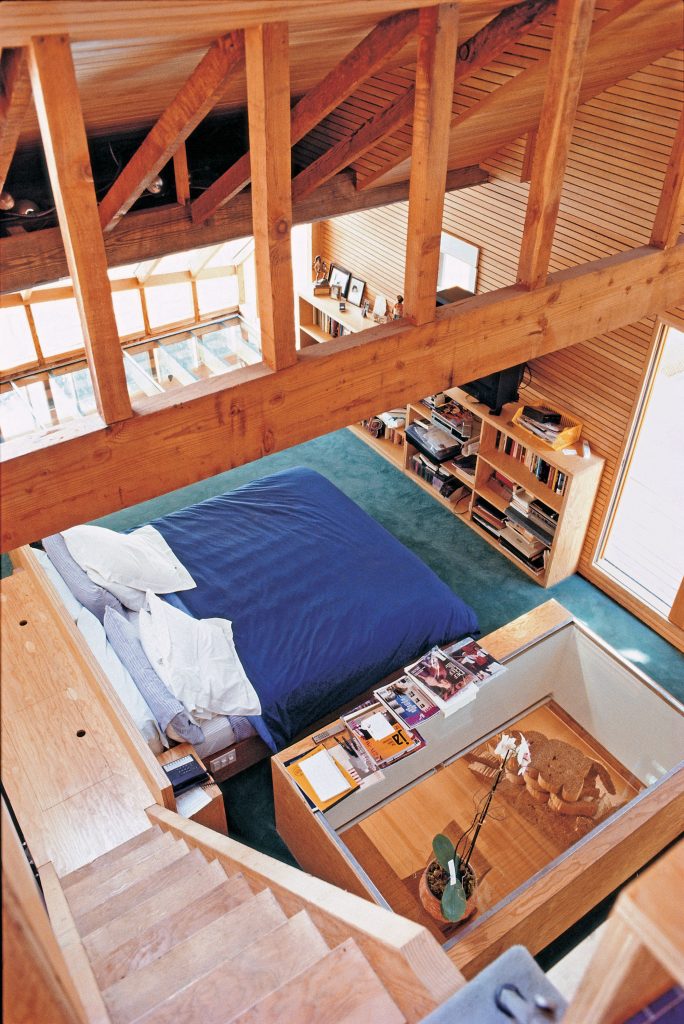Gehry House

Introduction
When Frank Gehry and his wife bought an existing home, built in 1920 in Santa Monica, California, the neighbors did not have the slightest idea that the corner residence would soon become a symbol of deconstructivism. Gehry, however, knew something had to be done in the house before he moved. His solution was daring for the 70s, involved the “balance of fragment and whole, raw and refined, new and old” and from that moment the controversy ensued.
Gehry actually kept the old Dutch colonial house, but not in a conventional manner, the new residence was built around the old. Holes were made, walls were thrown and were rebuilt and the quiet old house became a loud cry contemporary among the mansions of the astonished neighbors. The neighbors hated him, but that does not change the fact that the house would become a piece of art intertwined with the architecture.
The architect’s experimentation with new materials is very noticeable, like the new look experienced in a simple two-story bungalow. The Santa Monica home is not a new house built by the architect, but a modification of an existing building, changing the shape, extending, adding new materials and completely changing the appearance.
The American Institute of Architects awarded the Prize in 2012 for 25 years (2012 25 Year Award) to Gehry House, the home of architect Frank Gehry, being recognized for his contribution to the history of design and its continuing importance as an architectural landmark for more than two decades since its construction.
Location
Gehry Residence is located on the corner of 22nd Street and Washington Avenue in Santa Monica, California, United States. The only view of the house are the trees that surround the site, with complete privacy, as they close all the gaps above eye level with the exception of the window which overlooks the garden.
The drawings made by the architect represent its context, the landscape around the house is that of post-war urbanization. It is surrounded by fields, forests, deserts or grasslands, Gehry’s house sits on a small lot, a few blocks from an endless shopping avenue, Wilshire Boulevard. His views are full of home crowd representing “the American dream”.
Even the suburban lot purchased by Gehry was already occupied. A two-story building with pink tiles, “a small house without words and charming” as the architect called, poking her cute mansard roof on the horizon of the green suburbs. Instead of pulling, Gehry turned the old house at the base of his own dream. Cut walls, dropped ceilings, and wove the dismembered remains with a new architectural framework: industrial shell plywood, glass wire, galvanized metal and metal mesh.
Concept
“… I loved the idea of leaving the house intact… I came up with the idea of building a new home about. We were told there were ghosts in the house… I decided they were ghosts of cubism. Windows… I wanted to make them look like they’re dragging. At night, since the glass is tilted reflect light… So when you are sitting at this table all these cars are passing by, you see the moon in the wrong place… the moon is there but it reflects here… and you think it’s there and do not know where the hell are you… ” Frank Gehry
Gehry Residence is a deconstructivist work on a conventional suburban California house, remodeled in phases, over decades, from his reworking seminal 1978 original. The house meets important properties that make it different, however the principle is really hated renewal neighbors and your own style, it was difficult to understand the deconstructive aspect of the house.
The architect explains: “… Armed with very little money I decided to build a new house around the old and try to maintain a tension between the two, making one define the other, and making them feel that the old house was intact within the new, from the outside and from the inside. These were the basic objectives… ”
Description
Although the house retains a sense minimalist design is full of expressionism and sensitivity is freely understood as artistic intuition unresolved accident. The palette is anti-high-tech, “high tech”, in favor of a visual presence that is ordinary and created with “low cost technology”, “cheap tech”.

First reform
The new design proposed by the architect surrounds three sides on the ground floor of the old house, extending it to the street and leaving the exterior virtually intact, barely touched the facades that were encased in glass cubes, with the exception of the rear facade it was removed to open the rear garden.
Inside were made considerable changes in its two plants. In some places it has stripped the plaster coating to reveal the framing, exposing the joists and studs. It was renovated in accordance with the other side, showing the old and new elements. This is especially evident when walking through the rooms of the house and go through the new doors placed by Gehry and original housing.
The entrance is barely visible amid the salient angles of the exterior, which Gehry created from wood, glass, aluminum and metal mesh. The apex of the old house looks from inside this mix of materials, giving the impression that the house is constantly under construction.
The housing is made for people who live and move in it. Gehry uses routes that circulate through the space to create areas within or rest and motion through space. On the ground floor are located the kitchen, a living room, two bedrooms, a bathroom and backyard. On the first floor the master bedroom, a second bedroom, a dressing room, a bathroom and a terrace.
In 1991, due to family growth Gehry, the house had to be expanded. Although Gehry tried to maintain the same style, which allows the original design, to determine the addition, the house underwent significant change. The residence became much more “finished”, awakening the angry voices of those who strongly supported the original deconstructivist aesthetics. Yet the Gehry House is still a classic California architectural works.
The skylights were designed as separate entities, each with its own identity. None of the skylights were perceived as connected to each other, any relationship between them is haphazard and accidental. Nothing is consistent.
Second reform
The house was reinvented twice by the architect. The second reinvention was in 1992, due to new requirements. The children were grown, they needed a better family privacy and more room, so turned the garage into a guest room and a games room whilst adding a pool. Moreover, renewed the wooden structure that covered the house, missing some details of the first reform.
Gehry said early on that kept only the kitchen window, I wanted to make it look like the “ghost of Cubism”, it really was a cube without any symbolism. Just a cube, or the ghost of Cubism that tries to escape from the house and is trapped, not wanting to be there.
Spaces

Gehry used corrugated layers of metal boxes Cubist skylights and windows to create a larger sense of space and movement implied in the kitchen and dining room. He removed the walls to expose the wooden structure, which is the method of construction of the building. Before starting the process, Gehry made a list of the positive and negative qualities of the building:
- Exterior Positive: A giant euphorbia in the backyard
- Interior Positive: plywood walls in the studio, narrow plank floors oak paneled windows
- Negative: the neighborhood is occupied by buildings.

Gehry covered outside the house with a new and unusual skin, used a wrapping process, a montage of fences around construction. Used for the outer layers of corrugated sheet metal, with new walls that stand in odd angles and awnings that continue beyond the house to partially enclose a private courtyard. Two wired glass cubes form a link between the old house and the new layer.
Along Washington Avenue, a large glass cube looks momentarily interposed between the old and the new structure of the house, its form echoes the overhead trellis. The cube light flooded kitchen space while maintaining privacy.
Structure
The original structure is the conventional two-storey bungalow with framing. Some interior finishes have been stripped to reveal the support of the structure inside the residence. The bearing wall is raised inner and outer structural frames wooden support beams, girders and joists.
New structure
Gehry House is a renewal, in three stages, an existing suburban building. The original house is embedded with several additions intertwined conflicting structures, being very distorted its original structure. But the strength of the house comes from the feeling that the additions have not been “added” to the site, but that came from inside the house. It is as if the house had always harbored these twisted forms inside.
•‘first Stage’
In the first stage, the forms twist their way out from the inside. A bucket inclined, for example, consists of the wooden structure of the original house, breaks through the structure, removing the layers of the house. As these forms make their way out, take off the skin of the building, exposing the structure, create a second skin that wraps around the front and the site of the new volume, but disappears right posterior wall of the house to release her as a stage. After passing through the structure, forms escape this second skin, but ultimately prevents them from escaping. Therefore, the first stage operates in the space between the original and its skin wall displaced. This gap is an area of conflict in the stable differences between interior and exterior, original and added, structure and facade are questioned. The original farmhouse has become a strange artifact, trapped and distorted by the forms that have emerged from within it.
•Step second
In the second stage, the structure of the rear wall that is not protected by the skin, operates and planks come out. The structure almost literally breaks.
•Stage three
In the third stage, the courtyards are filled with shapes that seem to escape the house through the gap in the back wall, which is then closed. These forms are placed under tension by being twisted relationship with each other and with the house. Gehry House becomes a monograph with a complicated relationship between conflict within and between the forms.
Materials
It makes use of unconventional materials such as fences with trellis, glass inner wire and corrugated metal sheets, wood framing, corrugated steel, plywood and light wood frames.
The hidden idea behind the work of Gehry in what would be his residence is not the deconstruction of the old house of 1920 and the discovery of his bones. The sculpted shape and semi-industrial raw materials support the dynamic movement and irregular shapes and fluid.
The kitchen floor is covered with asphalt, suggesting a path to the outside of the original bungalow.
“… I was raised at the beginning of my career with a Viennese master to produce perfection, but in my first projects, I could not find the office to achieve this perfection. My artist friends, people like Jasper Johns, Bob Rauschenberg, Ed Kienholz, Claes Oldenburg, were working with very inexpensive materials, broken wood and paper, and were producing beauty. These were not superficial details, was rather straightforward, raised the question of what was the beauty. I chose to use the available jobs, and work with builders and make a virtue of its limitations. The painting had an immediacy that I wanted for architecture. Explored the processes of building materials to try them raw emotions and soul. Trying to find the essence of my own expression, I fantasized about being an artist blank canvas in front of deciding which was the first action. He called it the moment of truth. The architecture to solve complex problems. We need to understand and use technology, we have to create buildings that are safe and do not get wet, respectful of its context and its neighbors, and face a myriad of social responsibility issues, and even customer satisfaction.
But then what? The moment of truth, the composition of elements, selection of forms, scale, materials, color, finally, all the same issues that face painter and sculptor. The architecture is definitely an art, and all who practice the art of architecture architects are definitely… “[Gehry, 1989]
Video



